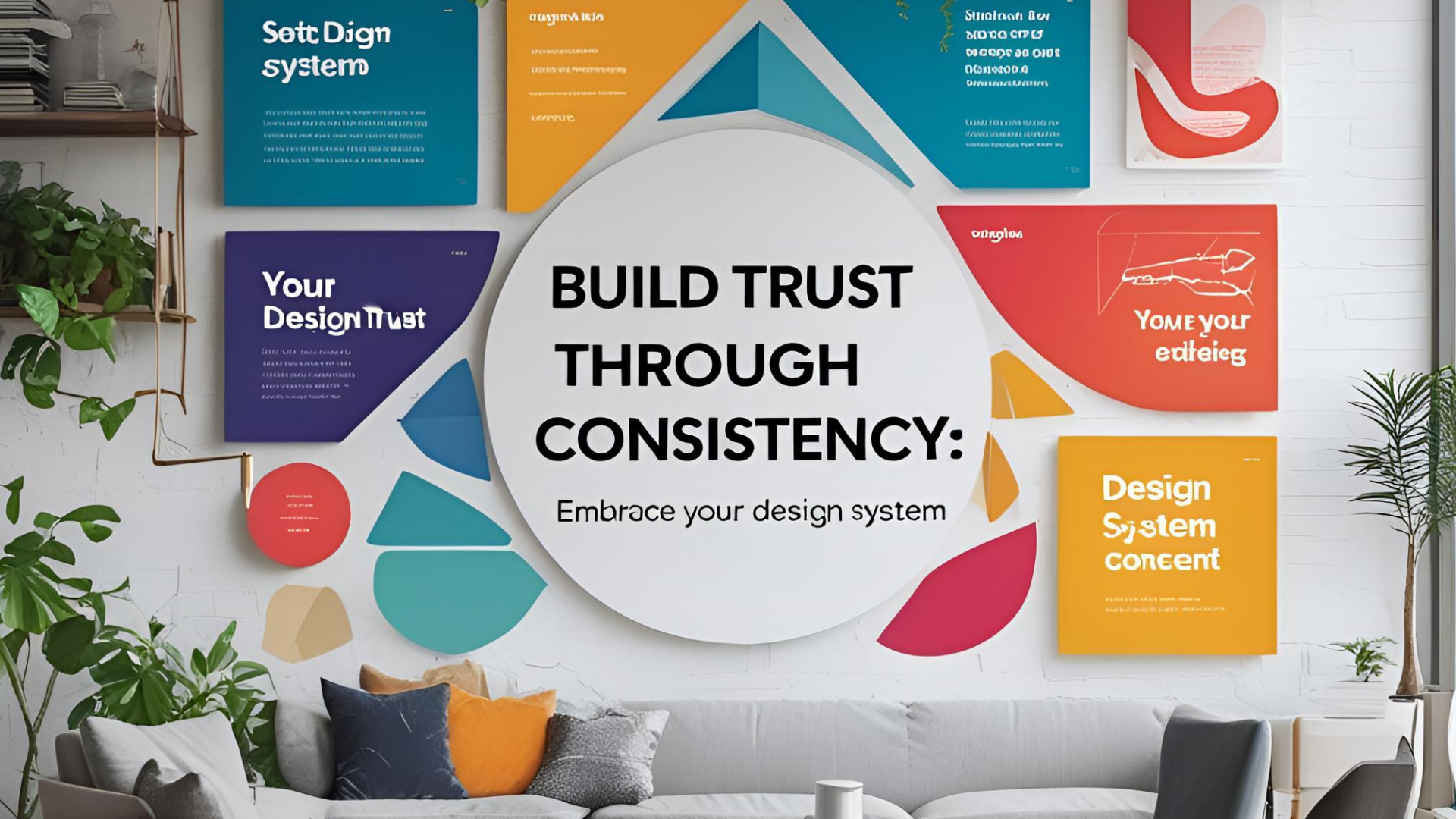
Introduction: Why Trust Starts with Design Consistency
In an era where digital products dominate the user experience, trust has become the cornerstone of successful brands. Whether you're designing a mobile app, a corporate website, or a SaaS platform, every interaction counts. Users are naturally drawn to familiarity, and when a digital interface offers a consistent experience, it reinforces a sense of reliability. This is where a design system becomes an essential asset.
Design systems help organizations deliver a coherent and predictable user experience across all platforms and touchpoints. They serve as the architectural blueprint for user interface (UI) design, empowering teams to craft products that look, feel, and function seamlessly. More importantly, they play a pivotal role in fostering trust by eliminating inconsistencies that could confuse or alienate users.
What Is a Design System?
- A design system is more than just a collection of UI components; it’s a comprehensive guide that aligns visual elements, interaction patterns, and brand messaging. It includes:
- UI components: Buttons, forms, icons, and modals that are reused throughout your products.
- Design tokens: Values for colors, spacing, typography, etc.
- Guidelines and principles: Documentation that outlines how and when to use specific elements.
- Accessibility standards: Rules to ensure inclusivity across your digital products.
Voice and tone guides: To maintain consistency in written content and microcopy.
Think of it as your brand’s design DNA. A design system creates a unified language across design and development teams, making collaboration smoother and products more intuitive.
SEO Keywords: design system, UI components, brand guidelines
LSI Terms: design framework, component library, design principles, design consistency
Why Consistency Builds Trust
1. Predictability and Familiarity
When users navigate a product, they rely on predictability. If a button changes shape or function from one page to the next, it erodes confidence. Consistent design enables users to build a mental model of how the product works, making it easier and more enjoyable to use.
2. Professionalism and Credibility
A polished, cohesive design shows attention to detail. When your product looks and feels consistent, it reflects professionalism, which reinforces credibility in the eyes of your users.
3. Reduced Cognitive Load
Inconsistent design forces users to stop and think about how to interact with your product. A design system eliminates this friction by standardizing interactions and visual elements, allowing users to focus on their goals rather than how to navigate the interface.
4. Emotional Engagement
Consistency cultivates a sense of brand reliability. Over time, users associate visual and behavioral patterns with your brand, leading to emotional trust and long-term loyalty.
SEO Keywords: build trust, user interface consistency, user experience design
LSI Terms: brand recognition, UX strategy, seamless interface
Key Benefits of Embracing a Design System
A. Improved Team Collaboration
Cross-functional teams—designers, developers, product managers—can align more effectively with a shared vocabulary. This alignment reduces the chances of miscommunication and accelerates the product development cycle.
B. Faster Development and Design Cycles
With pre-built UI components and clear guidelines, teams can focus on solving real user problems instead of reinventing design elements. This translates into faster time-to-market and increased innovation.
C. Scalability
Design systems are inherently scalable. Whether you're building a landing page or expanding a complex enterprise app, the components in your design system adapt to various contexts while maintaining brand integrity.
D. Enhanced Accessibility
Design systems integrate accessibility best practices from the ground up. Standardized contrast ratios, keyboard navigation, and screen reader compatibility ensure your product reaches the widest possible audience.
E. Cost Efficiency
By reducing design and development redundancies, design systems lower long-term production costs. Investing in a design system upfront results in significant ROI over time.
SEO Keywords: scalable design system, design efficiency, team collaboration
LSI Terms: UI scalability, product design workflow, cost-effective UX
Steps to Build and Implement a Design System
Step 1: Conduct a UI Audit: Identify inconsistencies in design elements across your product. Look for repeated but slightly different components and catalog them.
Step 2: Define the Core Foundation: Establish a foundation using design tokens—colors, typography, spacing, and grid systems that reflect your brand’s identity.
Step 3: Create a Component Library: Build reusable components for UI elements like buttons, modals, and cards. Ensure they are flexible and adaptive for different use cases.
Step 4: Document Guidelines Thoroughly: Good documentation ensures that your design system is understandable and usable by all stakeholders. Include when, how, and why to use each component.
Step 5: Foster Internal Adoption: Host workshops, tutorials, and Q&A sessions to help teams understand the benefits and practical applications of the system.
Step 6: Maintain and Evolve: A design system isn’t static. Establish a governance model to manage updates and solicit feedback from users and contributors.
Real-World Examples: How Leading Brands Build Trust Through Design Systems
Google’s Material Design: A highly flexible design system that ensures a unified experience across Android apps and web platforms. It prioritizes motion, color, and layout principles to guide interaction.
IBM Carbon Design System: Designed for enterprise applications, Carbon emphasizes modularity, accessibility, and scalability.
Shopify Polaris: Shopify’s design system enhances the merchant experience by providing clear guidelines and polished UI components.
Atlassian Design System: Built for team collaboration tools like Jira and Confluence, it provides structured guidance for both designers and developers.
These systems not only streamline product development but also create reliable user experiences that build brand trust and loyalty.
SEO Keywords: design system examples, real-world UI, trusted digital experience
LSI Terms: design system case study, UI library, branded UX
Future-Proofing Your Brand with a Design System
As digital trends evolve, so do user expectations. A well-maintained design system allows your brand to pivot quickly without compromising consistency. When it’s time to add new features or adapt to new platforms, your design system provides the flexibility and guidance needed to do so efficiently.
Moreover, a design system acts as a bridge between branding, design, and technology. It ensures that all departments within an organization can align on a shared vision, fostering synergy and reinforcing brand trust.
Conclusion: Your Design System Is Your Brand Promise
Consistency isn't just a design goal—it’s a strategic imperative. By embracing a design system, you signal to users that you value clarity, professionalism, and reliability. These are the pillars of trust.
A thoughtful, well-documented design system ensures that every user interaction—whether on desktop, mobile, or tablet—reinforces your brand’s identity. It allows you to scale confidently, innovate freely, and, most importantly, build enduring trust with your audience.
In a world full of design noise, consistency is your competitive advantage. Embrace your design system—not just as a toolkit, but as a trust-building engine for your brand.
SEO Keywords Summary:
- Design system
- Consistent UX
- Build user trust
- UI design principles
- Scalable UI components
- LSI Words Summary:
- Brand recognition
- Component library
- UX consistency
- Digital design standards
- Reusable UI elements





